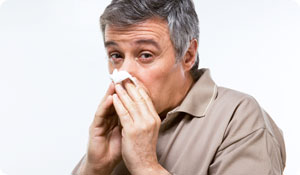
Does your workplace do a real job on your health? Your place of employment may expose you to substances that can trigger an array of symptoms.
Whether you work in the controlled setting like an office, spend your days in a laboratory or manufacturing plant, or are outdoors working with animals or plants, there are many allergens that, with repeated exposure, can make you feel quite sick.
7 Settings That Trigger Occupational Allergies
- Dental Offices. The problem can stem from latex gloves that contain latex proteins and chemicals that can cause itchiness, skin rashes, hives, and other symptoms. In some people, the reaction can also cause potentially serious nasal and respiratory symptoms. The same latex allergy risk also exists for doctors and other caregivers who work in doctor's offices, hospitals, and nursing homes.
- Copy Centers. The technicians who work with copy machines and printers in enclosed settings may find that gases from the ink and paper can spark occupational allergies.
- Pizzerias. The flour used in pizza dough, pastries, cakes, and other goodies can trigger nasal symptoms in people who become sensitive to this trigger over time. The same allergy hazard can exist for bakers and in those who work in a restaurant setting.
- Pet Grooming Salons. Groomers may start out with a mild pet allergy that initially seems very manageable, but ongoing exposure to pet dander and saliva can make allergy symptoms more severe. Scents contained in pet shampoos and other pet grooming products can also exasperate symptoms as well. People who work in animal hospitals and veterinary clinics may also find that being around pets causes similar occupational allergy symptoms.
- Schools. Researchers are now learning that older school buildings can harbor mold and dust mites than can trigger a reaction in people with indoor allergies. Leaky pipes, inadequate ventilation, and humidity problems can worsen the problem for people with occupational allergies. New school buildings aren't risk free either, since allergens exist in the chemicals and dust that comes from construction. Other common allergens at school include chalk dust, animal dander from class pets, chemicals in carpeting, and fumes from cleaning products.
- Spas. Hair and beauty products, including dyes, styling products, cosmetics, fragrances, and nail polish, can make beauticians and cosmetologists sick over time, and the tranquil setting of a spa isn't enough to counteract this stressful allergic reaction. The same reaction can be common in beauty salons, too.
- Farms. Fertilizers and pesticides can trigger allergic reactions and these symptoms can get worse over time. And allergy symptoms can become difficult to bear when it's also coupled with grass pollen and animal dander.
Take Control of Workplace Allergies
If your doctor confirms that your workplace is causing your allergy symptoms, you'll need to make some major on-the-job changes. This can encompass a wide range of actions such as advocating for better ventilation, wearing a mask to avoid breathing in triggers, taking allergy medications, or even undergoing immunization. If your efforts aren't successful, you may need to consider finding a new place to work.
Sources:
"FAQ: Occupational Allergies." Organization for Safety and Asepsis Procedures (OSAP). OSAP.org, n.d. Web. 16 Aug. 2011.
Nierenberg, Cari. "Allergies on the Job: 7 Workplace Irritants." ABC News/Health, 9 April 2009. Web. 16 Aug. 2011.
Peden, David and Reed, Charles. "Environmental and Occupational Allergies." The Journal of Allergy and Clinical Immunology 125 (2/2) (Feb. 2010): S150-S160.





